Solar Energy Myths and Facts: Clear Insights for All
Category: Renewable Energy
Debunking Solar Energy Myths with Science and Innovation
Whether you’re a curious beginner or a seasoned electrical engineer, understanding the truth behind solar energy is vital as renewable technologies rapidly shape the future of power. Many myths about solar energy persist, from doubts about efficiency and cost to misconceptions about its reliability and environmental impact. You’ve likely found yourself sifting through conflicting information, eager to separate fact from fiction to make informed decisions or deepen your technical knowledge. This blog is crafted precisely for you: it dives beyond the surface-level claims and offers clear, evidence-based explanations that illuminate the science and innovation in solar energy. Unlike typical overviews, we bridge the gap between introductory insights and technical depth, guiding you through the most common myths with up-to-date facts grounded in renewable energy research and technology advancements. Stick around to uncover how solar panels really work, the truth about their efficiency and costs, and the emerging technologies that may redefine renewable energy. Prepare to empower your understanding and debunk myths that could mislead your perspective on a cleaner energy future.
- Debunking Solar Energy Myths with Science and Innovation
- Understanding Solar Energy: Basic Science and Technology Principles
- Myth 1: Solar Panels Don’t Work on Cloudy or Cold Days - The Facts About Solar Efficiency
- Myth 2: Solar Energy Is Too Expensive to Be Worthwhile - Breaking Down Costs and ROI
- Myth 3: Solar Panels Require High Maintenance and Don’t Last Long - Durability Explained
- Myth 4: Solar Energy Can’t Power an Entire Home or Business Reliably - Reliability and Storage Solutions
- Myth 5: Manufacturing Solar Panels Is Environmentally Harmful - Evaluating the True Environmental Impact
- Emerging Solar Technologies: Innovations Shaping the Future of Solar Power
- How Solar Energy Integrates with Wind and Other Renewable Systems for Optimal Performance
- Addressing Common Concerns: Net Metering, Grid Integration, and Energy Independence
Understanding Solar Energy: Basic Science and Technology Principles
To truly dispel myths about solar energy, it’s essential to grasp the fundamental science and technology behind how sunlight is converted into usable power. At its core, solar energy harnesses photons—particles of light emitted by the sun—that, when absorbed by solar cells, generate electrical current through the photovoltaic (PV) effect. This process involves semiconductors, typically silicon, which are engineered to create an electric field: when photons strike the cell, they excite electrons, freeing them to flow as electricity.
Modern solar panels combine hundreds of these PV cells into modules optimized for maximum sunlight absorption, durability, and cost-effectiveness. Key principles include:
- Photon absorption and electron excitation: This is where sunlight’s energy is captured and converted.
- Electron flow and energy conversion: Freed electrons generate direct current (DC) electricity.
- Inverter technology: Converts DC electricity into alternating current (AC) for household and grid use.
- Efficiency factors: Material quality, cell architecture, and environmental conditions affect how much sunlight becomes electrical energy.
Understanding these scientific pillars reveals why solar energy systems have evolved into reliable and scalable solutions. Far from being marginal or experimental, today’s solar technology leverages decades of innovation in semiconductor physics, materials science, and power electronics—making solar power a cornerstone of sustainable energy strategies worldwide. This knowledge foundation enables both beginners and engineers to appreciate that solar energy’s challenges and advantages arise from well-understood physical laws and ongoing technological refinement, not myths or misconceptions.
Image courtesy of Kindel Media
Myth 1: Solar Panels Don’t Work on Cloudy or Cold Days - The Facts About Solar Efficiency
One of the most pervasive myths about solar energy is the belief that solar panels are ineffective on cloudy or cold days. While it’s true that direct sunlight increases solar panel output, modern photovoltaic technology is designed to capture and convert sunlight in various weather conditions, including diffuse light on overcast days.
How Solar Panels Perform in Cloudy Weather
Solar panels rely on photons, not heat, to generate electricity. Even when the sky is cloudy, diffused sunlight still contains photons that can be absorbed by solar cells. Though energy production decreases compared to bright, sunny conditions, it does not drop to zero. In fact, many solar installations operate at 10-25% of their rated capacity under heavy cloud cover. Innovations such as anti-reflective coatings and high-efficiency cell designs further improve light capture, making solar panels viable in regions with variable weather.
Cold Temperatures and Solar Efficiency
Contrary to common misconceptions, cold weather can actually enhance solar panel performance. Solar cells operate more efficiently at lower temperatures due to reduced resistance in semiconductor materials. While snow accumulation might temporarily block sunlight, panels are typically installed at angles that facilitate snow shedding, and even thin layers of snow can allow some light through. The combination of cooler temperatures and consistent sunlight often leads to higher energy yields during cold, sunny winter days compared to hot, cloudless summer days.
Key Takeaways:
- Solar panels generate electricity from light, not heat, meaning they work under diffuse sunlight conditions.
- Cloud cover reduces but does not eliminate solar energy production—panels can still produce meaningful power.
- Lower temperatures improve PV cell efficiency, making cold days beneficial for solar output.
- Snow and frost impact performance only temporarily and are manageable with proper system design and maintenance.
Understanding these facts clears up the misconception that solar energy is unreliable in less-than-ideal weather. Sophisticated materials science and photovoltaic engineering continue to push the boundaries of solar efficiency, ensuring energy production remains strong across diverse climates and seasons—key considerations for both renewable energy enthusiasts and electrical engineers planning next-generation solar solutions.

Image courtesy of Jan Van Bizar
Myth 2: Solar Energy Is Too Expensive to Be Worthwhile - Breaking Down Costs and ROI
A widespread myth that often discourages adoption of solar energy is the belief that solar power systems are prohibitively expensive and offer poor financial returns. In reality, the economics of solar have transformed dramatically over the past decade due to advancements in photovoltaic technology, manufacturing scale, and supportive policies. Understanding the total costs and the return on investment (ROI) associated with solar energy reveals why it’s increasingly a cost-effective and attractive option for both residential and commercial users.
The Declining Cost Curve of Solar Technology
The price of solar panels, measured per watt of installed capacity, has plummeted by more than 80% since 2010. This reduction is driven by:
- Improvements in PV material efficiency and manufacturing: Innovations in silicon wafer processes, cell architecture, and automated assembly lower production costs.
- Economies of scale: Mass production and global supply chains reduce per-unit expenses.
- Technological advancements: Next-generation inverters, mounting systems, and energy management software streamline installation and improve lifespan, reducing operational spending.
Beyond hardware, installation costs have also decreased due to improved techniques and competition in the solar services industry, making upfront expenses far lower than historically perceived.
Understanding Solar ROI: Financial and Environmental Paybacks
When evaluating solar economics, it’s critical to consider more than just upfront costs. Key factors influencing ROI include:
- Electricity cost savings: Solar systems generate free electricity after installation, reducing monthly utility bills and shielding consumers from rising energy prices.
- Incentives and tax credits: Various governments offer subsidies, rebates, or tax credits that effectively lower initial expenses.
- System lifespan and maintenance: Modern panels typically last 25–30 years with minimal maintenance, spreading costs over decades.
- Increased property value: Solar installations often increase real estate value due to energy savings and sustainability appeal.
- Environmental benefits: Though harder to quantify financially, reducing carbon footprint aligns with corporate sustainability goals and regulatory compliance, increasingly valued in business metrics.
Key Points to Consider:
- The average payback period for residential solar ranges between 5 to 10 years, depending on location, system size, and incentives.
- Solar energy can significantly lower levelized cost of electricity (LCOE) compared to fossil fuels and electricity grid prices in many regions.
- Advances in energy storage and grid integration enhance the value proposition by enabling greater self-consumption and grid stability.
- For enterprises and utilities, deploying solar is often part of diversified strategies combining cost savings with meeting renewable portfolio standards.
In sum, solar energy today represents a financially viable and increasingly affordable renewable technology, with continued innovation driving costs down and improving returns. For electrical engineers and energy decision-makers, incorporating realistic, data-driven cost analyses dispels the myth of prohibitive expense and highlights solar power’s role as both an economic and environmental win in modern energy systems.
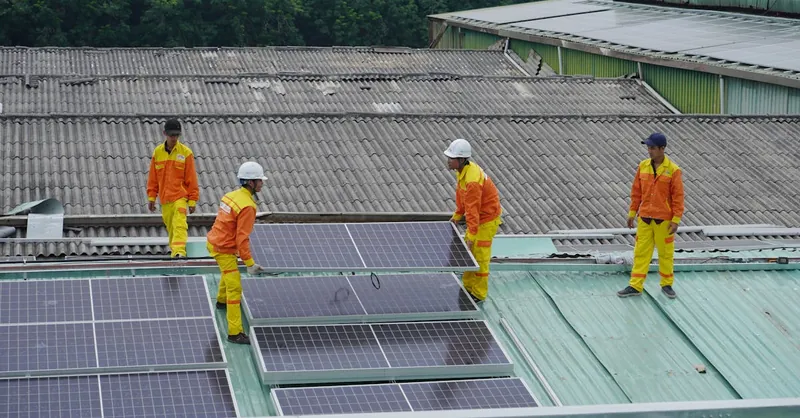
Image courtesy of Trinh Trần
Myth 3: Solar Panels Require High Maintenance and Don’t Last Long - Durability Explained
A common misconception about solar energy is that solar panels demand constant upkeep and have short operational lifespans, making them unreliable or costly to maintain. In reality, modern solar panels are engineered for durability, requiring minimal maintenance while delivering efficient performance over decades. Understanding the advanced materials, manufacturing standards, and monitoring technologies that contribute to solar panel longevity is crucial to debunk this myth.
Why Solar Panels Are Low-Maintenance
Solar panels consist primarily of robust semiconductor materials like monocrystalline or polycrystalline silicon encapsulated within protective tempered glass and weather-resistant frames. These design choices safeguard against environmental stresses such as rain, wind, hail, and UV exposure. Typical maintenance routines involve:
- Periodic cleaning: Dust, dirt, or debris can slightly reduce efficiency, but natural rain often sufficiently cleans panels in many climates.
- Performance monitoring: Modern solar systems use smart inverters and IoT-enabled monitoring platforms that alert owners to any performance issues early, reducing the need for manual inspections.
- Physical inspections: Annual or biannual checks ensure mounting hardware security and detect potential shading or wiring problems.
Unlike many mechanical energy systems, solar panels have no moving parts, drastically reducing wear and tear and the likelihood of mechanical failures.
Solar Panel Lifespan and Degradation Rates
Solar panels are built to last. Most manufacturers provide 25 to 30 years of power output warranties, ensuring that panels will operate at approximately 80% or more of their original capacity at the end of this period. Actual field data often shows panels retaining even higher output well beyond warranty lifespans.
The gradual decrease in energy production, known as solar panel degradation, occurs at a typical rate of 0.5% to 1% per year, a slow deterioration driven primarily by environmental exposure and material aging. Advances in photovoltaic technology continuously improve degradation resistance through:
- Enhanced anti-corrosion coatings
- Improved encapsulant materials to prevent moisture ingress
- Resilient frame and junction box designs to withstand thermal cycling
Key Points to Understand:
- Minimal maintenance requirements: Mostly limited to cleaning and routine inspections, significantly lowering operational costs.
- Robust material science ensures panels withstand harsh weather and physical impacts.
- Long operational lifespan exceeds 25 years, with slow, predictable degradation rates.
- Smart monitoring and inverter technology enable proactive maintenance, maximizing system uptime and productivity.
By appreciating these facts, beginners and electrical engineers alike can confidently reject the myth that solar panels are high-maintenance or short-lived. Instead, solar energy solutions represent a durable, reliable, and low-maintenance investment in sustainable power infrastructure—aligned with both everyday user convenience and rigorous engineering standards.
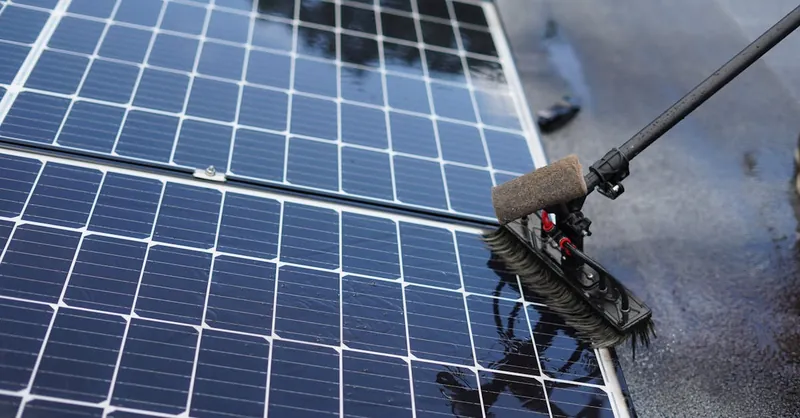
Image courtesy of Florida Solar Fix
Myth 4: Solar Energy Can’t Power an Entire Home or Business Reliably - Reliability and Storage Solutions
A common misconception is that solar energy cannot reliably power an entire home or business, especially around the clock or during periods without sunlight. However, advancements in energy storage technology, smart grid integration, and system design have significantly improved the reliability and consistency of solar power for both residential and commercial applications.
Enhancing Reliability Through Energy Storage
Solar panels generate electricity only when exposed to sunlight, creating an intermittent supply. To overcome this, battery energy storage systems (BESS) have become indispensable components of modern solar installations. Lithium-ion batteries, flow batteries, and emerging solid-state technologies enable surplus solar energy to be stored during peak production hours and dispatched during nighttime or cloudy periods, ensuring a continuous power supply.
Key benefits of integrating storage include:
- Load shifting: Storing excess daytime solar energy for use after sunset lowers dependence on the grid and stabilizes power availability.
- Backup power: Batteries provide backup during grid outages, critical for businesses requiring uninterrupted operations.
- Peak shaving: Reduces peak demand charges by supplying stored energy during high-consumption periods, improving cost-effectiveness.
- Increased self-consumption: Maximizes use of on-site generated solar power, enhancing overall system ROI and energy independence.
Smart Inverters and Grid Integration Improve System Stability
Modern solar systems employ advanced inverter technologies that not only convert DC to AC but also enable grid-supportive functions such as reactive power control and frequency regulation. Coupled with smart energy management systems (EMS), these technologies optimize energy flows between solar generation, storage, loads, and the utility grid, increasing resilience and reliability.
Moreover, grid-tied solar systems provide a reliable hybrid energy approach. When solar and batteries are insufficient—such as extended cloudy periods—the grid can supplement electricity needs. Conversely, excess solar power can be fed back to the grid via net metering, enhancing overall energy efficiency.
Proven Reliability in Real-World Applications
Across diverse climates and scales, solar-plus-storage systems have demonstrated dependable performance powering entire homes, commercial buildings, and even critical infrastructure. Innovations in predictive analytics, weather forecasting integration, and real-time performance monitoring further ensure continuous operation and rapid fault detection.
SEO-Optimized Takeaways:
- Energy storage technologies—especially lithium-ion batteries—are crucial for making solar power a reliable, 24/7 energy source for homes and businesses.
- Smart inverters and energy management systems optimize solar power integration with the grid, enhancing system stability and performance.
- Grid-tied solar systems combined with storage offer a flexible, resilient solution that mitigates solar intermittency and maximizes energy independence.
- Continuous innovations in battery capacity, lifespan, and cost reduction are accelerating solar energy’s capability to fully meet residential and commercial power demands reliably.
By appreciating these significant technological advancements, both beginners and electrical engineers can confidently recognize that solar energy is well-equipped to power entire homes and businesses reliably, debunking outdated myths and highlighting its vital role in a sustainable energy future.
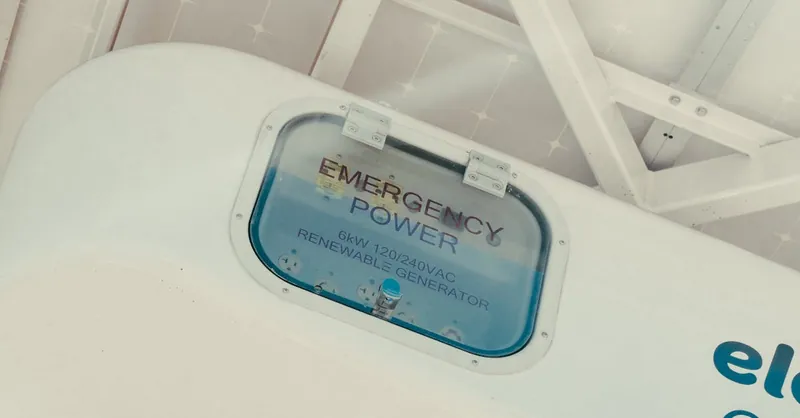
Image courtesy of Kindel Media
Myth 5: Manufacturing Solar Panels Is Environmentally Harmful - Evaluating the True Environmental Impact
A critical myth often cited against solar energy is that the manufacturing process of solar panels causes significant environmental harm, thereby negating their green benefits. While it is true that producing photovoltaic (PV) panels involves energy consumption and chemical use, a comprehensive evaluation reveals that the overall environmental impact of solar panel manufacturing is minimal compared to the clean energy they generate over their lifespan.
Understanding the Manufacturing Footprint
Solar panel production requires raw materials such as silicon, glass, aluminum, and various metals, along with the energy-intensive processes of crystal growing, wafer slicing, cell fabrication, and module assembly. This leads to greenhouse gas emissions and hazardous waste generation typical of many industrial activities. However, ongoing innovations and strict environmental regulations within the solar industry have significantly reduced these impacts through:
- Energy-efficient manufacturing: Use of renewable electricity and optimized production lines lowers the carbon footprint.
- Cleaner chemical processes: Advances in material processing reduce harmful emissions and waste byproducts.
- Recycling and circular economy initiatives: Recovery of silicon, glass, and metals from end-of-life panels minimizes resource extraction and landfill waste.
Life Cycle Assessment Shows Positive Environmental Balance
Life cycle assessment (LCA) studies—an analytic approach that considers GHG emissions, water use, and other ecological metrics from raw material extraction to end-of-life recycling—consistently demonstrate that solar panels generate between 20 and 50 times more clean energy than the energy required to produce them. This energy payback time typically ranges from 1 to 4 years depending on technology and location, far shorter than the 25-30 year operational lifespan of most panels.
Key environmental benefits from switching to solar energy include:
- Dramatic reductions in carbon dioxide emissions compared to fossil fuel electricity.
- Lower water usage, as solar power systems need minimal water compared to coal, natural gas, or nuclear plants.
- Elimination of air pollutants like sulfur oxides, mercury, and particulate matter associated with conventional power generation.
Key Points to Remember:
- The initial environmental cost of solar panel manufacturing is rapidly decreasing due to technological progress and sustainable practices.
- Solar panels deliver a net positive environmental impact, producing vastly more clean energy over their lifetimes than is consumed in their fabrication.
- Recycling programs and material recovery are key to minimizing waste and supporting a circular economy in the solar industry.
- Transitioning to solar energy leads to significant reductions in greenhouse gas emissions and resource consumption, underpinning global climate goals.
This nuanced understanding dispels the myth that solar panel production undermines environmental sustainability. Instead, the scientific evidence clearly indicates that solar energy is a profoundly beneficial technology for reducing humanity’s ecological footprint, making it a smart choice for individuals, engineers, and policymakers committed to a cleaner, more sustainable energy future.
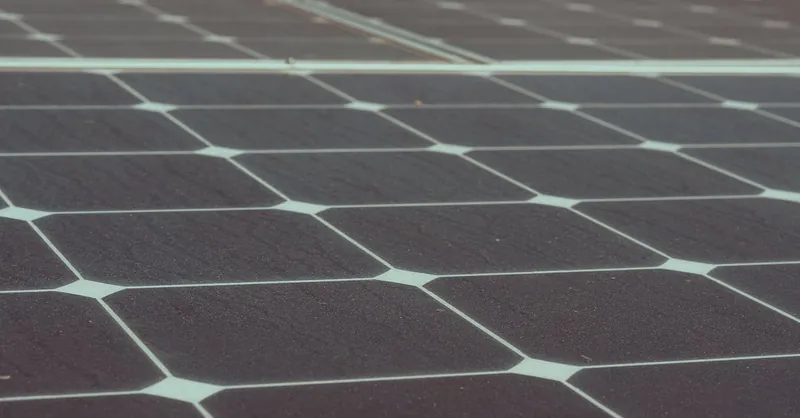
Image courtesy of Kindel Media
Emerging Solar Technologies: Innovations Shaping the Future of Solar Power
As the global demand for clean energy accelerates, emerging solar technologies are driving significant changes in how solar power is produced, stored, and integrated into energy systems. These innovations promise to enhance solar efficiency, reduce costs, and enable new applications—empowering both beginners and electrical engineers to envision a future where solar energy plays an even more pivotal role in the global energy landscape.
Next-Generation Photovoltaic Materials and Architectures
Beyond traditional silicon-based solar cells, researchers are pioneering advanced materials that could dramatically increase solar conversion efficiency and adaptability:
- Perovskite Solar Cells: These cells feature a crystalline structure that offers high absorption and low-cost fabrication. Their potential for tandem layering with silicon cells can push efficiencies beyond 30%, surpassing conventional limits.
- Thin-Film Technologies: Utilizing materials like cadmium telluride (CdTe) or copper indium gallium selenide (CIGS), thin-film panels are lightweight, flexible, and suited for curved surfaces and building-integrated photovoltaics (BIPV).
- Organic Photovoltaics (OPVs): OPVs use carbon-based materials, allowing for semi-transparent panels ideal for windows or wearable applications, although efficiency improvements are still underway.
- Quantum Dot Solar Cells: Harnessing nanoscale semiconductor particles, these cells aim to capture a wider spectrum of sunlight, potentially improving efficiency in low-light and variable conditions.
Innovations in Solar Energy Storage and Grid Integration
The coupling of solar generation with cutting-edge energy storage and smart grid technologies is essential for overcoming intermittency and optimizing solar’s role in modern grids:
- Solid-State and Flow Batteries: These emerging storage solutions offer enhanced safety, higher energy densities, and longer cycle lives compared to conventional lithium-ion batteries.
- Solar-Integrated Hydrogen Production: Excess solar electricity can be converted into green hydrogen through electrolysis, providing a versatile energy carrier for transportation, industry, and long-term storage.
- Artificial Intelligence (AI) and Machine Learning: AI-driven energy management systems optimize solar generation forecasting, load balancing, and predictive maintenance, boosting overall system efficiency.
- Vehicle-to-Grid (V2G) Technologies: Electric vehicles equipped with bidirectional charging act as mobile storage units, feeding solar energy back to homes or the grid during peak demand periods.
The Role of Emerging Technologies in Expanding Solar Applications
These advancements pave the way for new possibilities such as:
- Floating Solar Farms: Deploying PV panels on water bodies reduces land use, improves panel cooling, and limits water evaporation.
- Agrivoltaics: Combining agriculture and solar power enables dual land-use, increasing farm profitability and sustainability.
- Building-Integrated Photovoltaics (BIPV): Seamlessly embedding solar cells into building materials—such as windows, facades, and roofing—transforms structures into power producers without additional space requirements.
By staying informed about these cutting-edge developments, both beginners and seasoned electrical engineers can grasp how innovation in materials science, storage technologies, and system integration will continue to expand solar energy’s efficiency, affordability, and versatility—ultimately powering a resilient, sustainable energy future worldwide.
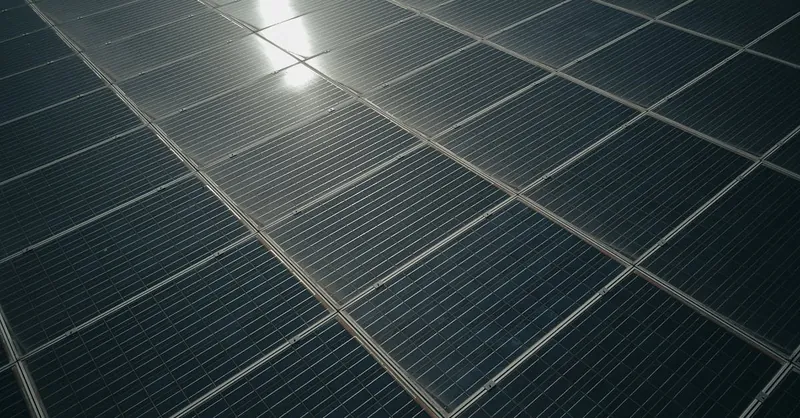
Image courtesy of Kindel Media
How Solar Energy Integrates with Wind and Other Renewable Systems for Optimal Performance
To maximize the benefits of renewable energy, solar power rarely operates in isolation. Instead, its integration with wind energy and other renewable technologies creates hybrid systems that enhance grid stability, energy reliability, and cost-effectiveness. Understanding how solar energy synergizes with diverse renewables is key for electrical engineers and energy strategists aiming to optimize renewable energy performance and accelerate the transition to sustainable power systems.
Complementary Generation Profiles: Solar and Wind
One of the most significant advantages of combining solar and wind energy is their complementary generation patterns. Solar irradiance peaks during daylight hours, especially around midday, while wind speeds often increase during the evening and nighttime or vary seasonally depending on location. This timing mismatch creates a natural balancing effect:
- Increased overall capacity factor: Hybrid solar-wind systems produce power more consistently across a 24-hour cycle.
- Reduced variability: The intermittent nature of each resource is smoothed out, decreasing reliance on fossil fuel backup or large storage capacities.
- Enhanced grid resilience: A more diverse renewable portfolio improves reliability under changing weather conditions.
Hybrid Renewable Systems and Energy Management
Beyond solar and wind, integrating additional renewable sources such as hydropower, geothermal, and emerging technologies like wave energy can further stabilize energy supply. Optimized energy management systems (EMS) play a crucial role by coordinating power flows between generation assets, energy storage, and loads.
Key integration strategies include:
- Smart inverter coordination: Enables seamless synchronization and reactive power support across solar, wind, and battery systems.
- Advanced forecasting algorithms: Utilize weather and load data to predict generation and optimize dispatch schedules.
- Microgrid and virtual power plant (VPP) architectures: Aggregate distributed renewable assets to participate effectively in energy markets and grid services.
Benefits of Renewable Integration for Electrical Engineers and Energy Planners
For electrical engineers, the integration of solar with wind and other renewable sources presents both opportunities and challenges:
- Optimization of system design: Engineers can tailor hybrid systems to local resource profiles, enhancing energy yield and reducing costs.
- Improved power quality and stability: Hybrid systems offer dynamic grid support functions, such as voltage regulation and frequency response.
- Enhanced sustainability and energy security: A diverse renewable mix minimizes environmental impact and mitigates risks associated with single-source dependency.
By leveraging the complementary strengths of solar energy alongside wind and other renewables, system designers and engineers can build highly efficient, reliable, and resilient energy solutions. This integrated approach advances the vision of a fully renewable-powered grid that meets global energy demands sustainably and economically.
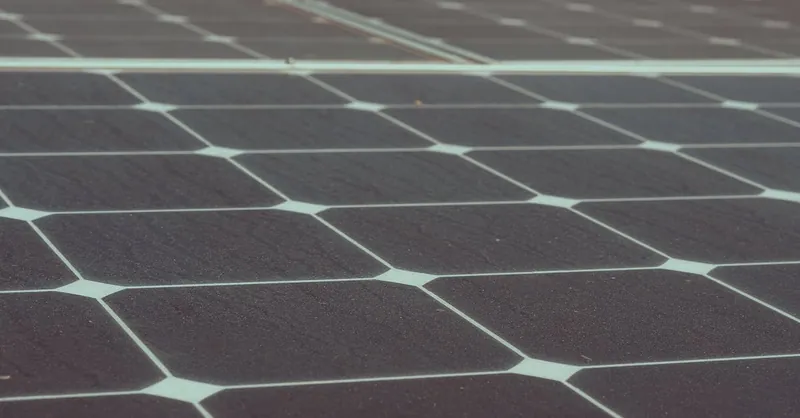
Image courtesy of Kindel Media
Addressing Common Concerns: Net Metering, Grid Integration, and Energy Independence
As solar energy becomes more widespread, questions about net metering policies, grid integration challenges, and energy independence often arise, sometimes clouded by misconceptions. Addressing these concerns with clarity is essential for anyone—from beginners to electrical engineers—looking to fully understand how solar energy interacts with existing electrical infrastructure and supports broader sustainability goals.
Net Metering: Maximizing the Value of Solar Power
Net metering is a policy mechanism that allows solar energy system owners to feed excess electricity back into the grid in exchange for credits on their utility bills. This system effectively lets consumers use the grid as a virtual battery, offsetting energy consumption during non-sunny periods with previously exported surplus power.
Key points about net metering include:
- Financial Benefit: Net metering improves the economic feasibility of solar by increasing self-consumption and reducing energy costs.
- Grid Support: By supplying surplus power, solar users help stabilize the grid and reduce peak demand burdens.
- Policy Variability: Net metering rules differ by region; understanding local regulations is crucial for accurate project planning.
- Evolving Models: Utilities and regulators are developing time-of-use and dynamic pricing structures to optimize net metering benefits and grid health.
For engineers and system designers, integrating net metering into system architectures requires accurate energy production forecasts, real-time monitoring, and smart inverter functionalities to comply with grid standards and maximize financial returns.
Grid Integration: Overcoming Challenges and Enhancing Stability
The growing penetration of distributed solar generation introduces both opportunities and challenges for electrical grids. Grid integration involves ensuring that variable solar output does not compromise voltage stability, frequency regulation, or power quality.
Advanced solutions enabling effective grid integration include:
- Smart Inverters: These devices offer dynamic reactive power control, voltage regulation, and ride-through capabilities to maintain grid reliability.
- Energy Management Systems (EMS): EMS optimize the interplay between solar generation, storage, and load demand in real time.
- Demand Response Programs: Coordinating consumption patterns with solar availability reduces grid stress and improves overall efficiency.
- Grid Modernization: Upgraded infrastructure, including advanced metering and communication networks, facilitates two-way power flows and better system visibility.
Electrical engineers play a critical role in designing and implementing these technologies to ensure seamless solar grid integration, balancing renewable generation with conventional power sources, and meeting stringent grid codes.
Energy Independence: How Solar Empowers Consumers
Solar energy contributes significantly to energy independence by reducing reliance on centralized fossil fuel power plants and imported fuels. Whether through grid-tied systems with net metering, or off-grid setups paired with energy storage, solar empowers individuals and communities to generate their own clean, affordable electricity.
Benefits of solar-enabled energy independence include:
- Resilience: Self-generation combined with storage capabilities offers backup power during outages.
- Cost Control: Solar users gain protection from volatile energy prices and utility rate hikes.
- Sustainability: Localized renewable energy production minimizes transmission losses and carbon footprints.
- Autonomy: Decentralized solar installations shift power decision-making closer to the point of use.
For electrical engineers, advancing energy independence means integrating distributed solar with microgrids, designing robust storage solutions, and developing control strategies that optimize local energy generation and consumption.
By understanding how net metering, grid integration, and energy independence interact within the solar ecosystem, stakeholders can overcome common concerns and leverage solar energy’s full potential for a resilient, sustainable electricity future.
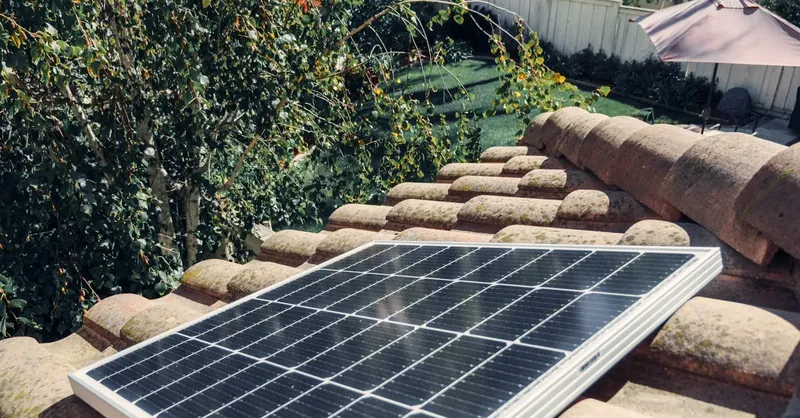
Image courtesy of Kindel Media
